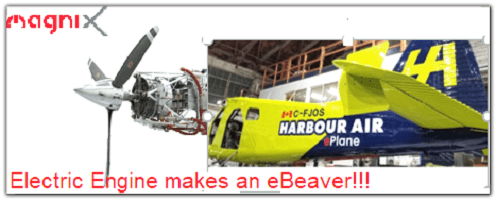An eBeaver has lifted and landed 7 minutes in December, good month for aviation innovation | JDA Journal

Same Month as Wright Brothers, an ePowered DHC-2 Beaver passes its first test
Electric propulsion important for future environmentally better flight
Long path from small, short range to longer haul, bigger aircraft flight
The future of aircraft is environmentally friendly electronic propulsion. The real challenge is for the long range and large capacity aircraft. Be that as it may, there are lessons to be learned from smaller, short haul aircraft. Canada witnessed the test flight in the proof of an ePowered seaplane.
The aircraft which is being outfitted with a magniX engine on the de Havilland DHC-2 Beaver aircraft, which is ordinarily equipped with Pratt & Whitney PT-6A turbine engines. The combustion powerplant burns about $300 worth of jet A fuel per hour, while the eBeaver packs enough battery life to fly about 100 miles at a cost of around $10 to $20 worth of electricity.
Transport Canada, Harbour Air Seaplanes and U.S. firm have initiated a two year approval process for the propulsion system. With the proper TC certificates in hand, retrofitting of the seaplane fleet. Much to learn.
[Other stories about the challenges of this innovative technology:
World’s first fully-electric commercial aircraft completes test flight

DON MACKINNON | AFP | Getty Images
The world’s first fully-electric aircraft for commercial flight has taken to the skies in Canada.
The plane flew above the Fraser River outside Vancouver for about seven minutes before touching down at around 8:30 a.m. local time on Tuesday.
The aircraft — an aging six-passenger DHC-2 de Havilland Beaver seaplane — has been retrofitted with a 750-horsepower electric motor built by U.S. firm magniX.
The engine maker from Redmond, Washington, is working in partnership with Canada’s Harbour Air Seaplanes with the aim of building a fully electrified fleet of 40 seaplanes.
Operating routes between hubs like Seattle and Vancouver, Harbour Air carries around 500,000 passengers on 30,000 commercial flights each year.
“Today, we made history,” said Greg McDougall, CEO and founder of Harbour Air Seaplanes in statement, shortly after piloting the test flight himself.
The engine, the magni500, was unveiled at the Paris Air Show in June this year.
Roei Ganzarski, CEO of magniX, said the electric era of aviation was coming and that the transport industry was “ripe for a massive disruption.”
“Now we are proving that low-cost, environmentally friendly, commercial electric air travel can be a reality in the very near future,” he added.
MagniX and Harbour Air said they will now begin the certification and approval process for both the engine and the retrofitting of aircraft and hope to be operating an all-electric commercial fleet within two years.
The steps in this certification process and the initial operations will provide a useful record for future ePowered aircraft.
Share this article:
